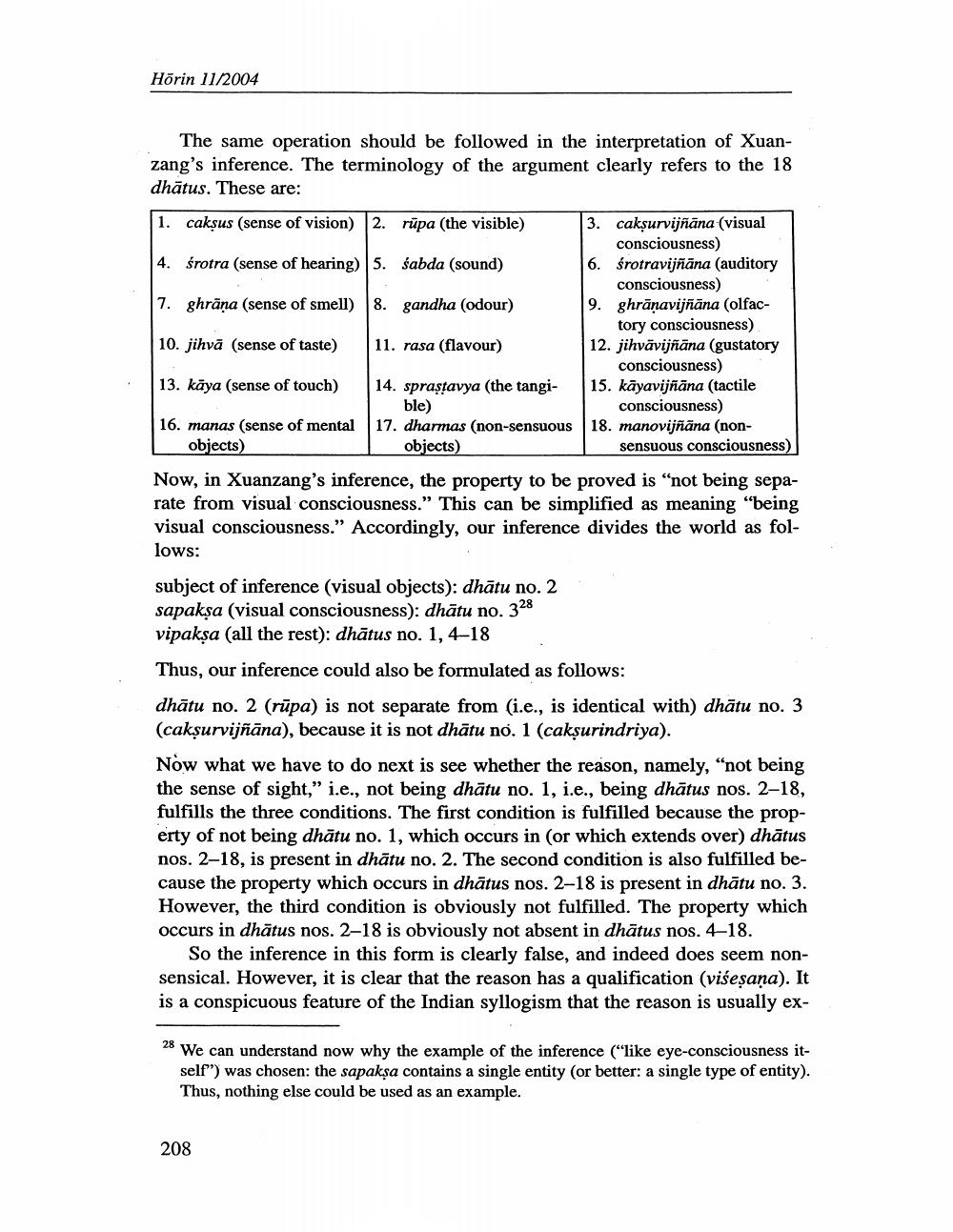________________
Hörin 11/2004
The same operation should be followed in the interpretation of Xuanzang's inference. The terminology of the argument clearly refers to the 18 dhātus. These are:
1. cakṣus (sense of vision)
2. rūpa (the visible)
4. śrotra (sense of hearing) |5. sabda (sound)
|7. ghrāņa (sense of smell) 8. gandha (odour)
3. cakşurvijñāna (visual
consciousness) śrotravijñāna (auditory
consciousness) 9. ghrānavijñāna (olfac
tory consciousness) 12. jihvāvijñāna (gustatory
consciousness) 15. kāyavijñāna (tactile
consciousness) 18. manovijñāna (non
sensuous consciousness)
10. jihvā (sense of taste)
11. rasa (flavour)
13. kāya (sense of touch)
16. manas (sense of mental
objects)
14. sprastavya (the tangi-
ble) 17. dharmas (non-sensuous
objects)
Now, in Xuanzang's inference, the property to be proved is "not being separate from visual consciousness." This can be simplified as meaning "being visual consciousness." Accordingly, our inference divides the world as follows:
subject of inference (visual objects): dhātu no. 2 sapakșa (visual consciousness): dhātu no. 328 vipaksa (all the rest): dhātus no. 1,4-18 Thus, our inference could also be formulated as follows: dhātu no. 2 (rūpa) is not separate from (i.e., is identical with) dhātu no. 3 (cakşurvijñāna), because it is not dhātu no. 1 (cakşurindriya). Now what we have to do next is see whether the reason, namely, “not being the sense of sight," i.e., not being dhātu no. 1, i.e., being dhātus nos. 2–18, fulfills the three conditions. The first condition is fulfilled because the property of not being dhātu no. 1, which occurs in (or which extends over) dhātus nos. 2-18, is present in dhātu no. 2. The second condition is also fulfilled because the property which occurs in dhātus nos. 2–18 is present in dhātu no. 3. However, the third condition is obviously not fulfilled. The property which occurs in dhātus nos. 2–18 is obviously not absent in dhātus nos. 4–18.
So the inference in this form is clearly false, and indeed does seem nonsensical. However, it is clear that the reason has a qualification (višeşaņa). It is a conspicuous feature of the Indian syllogism that the reason is usually ex
28 We can understand now why the example of the inference ("like eye-consciousness it
self") was chosen: the sapaksa contains a single entity (or better: a single type of entity). Thus, nothing else could be used as an example.
208




